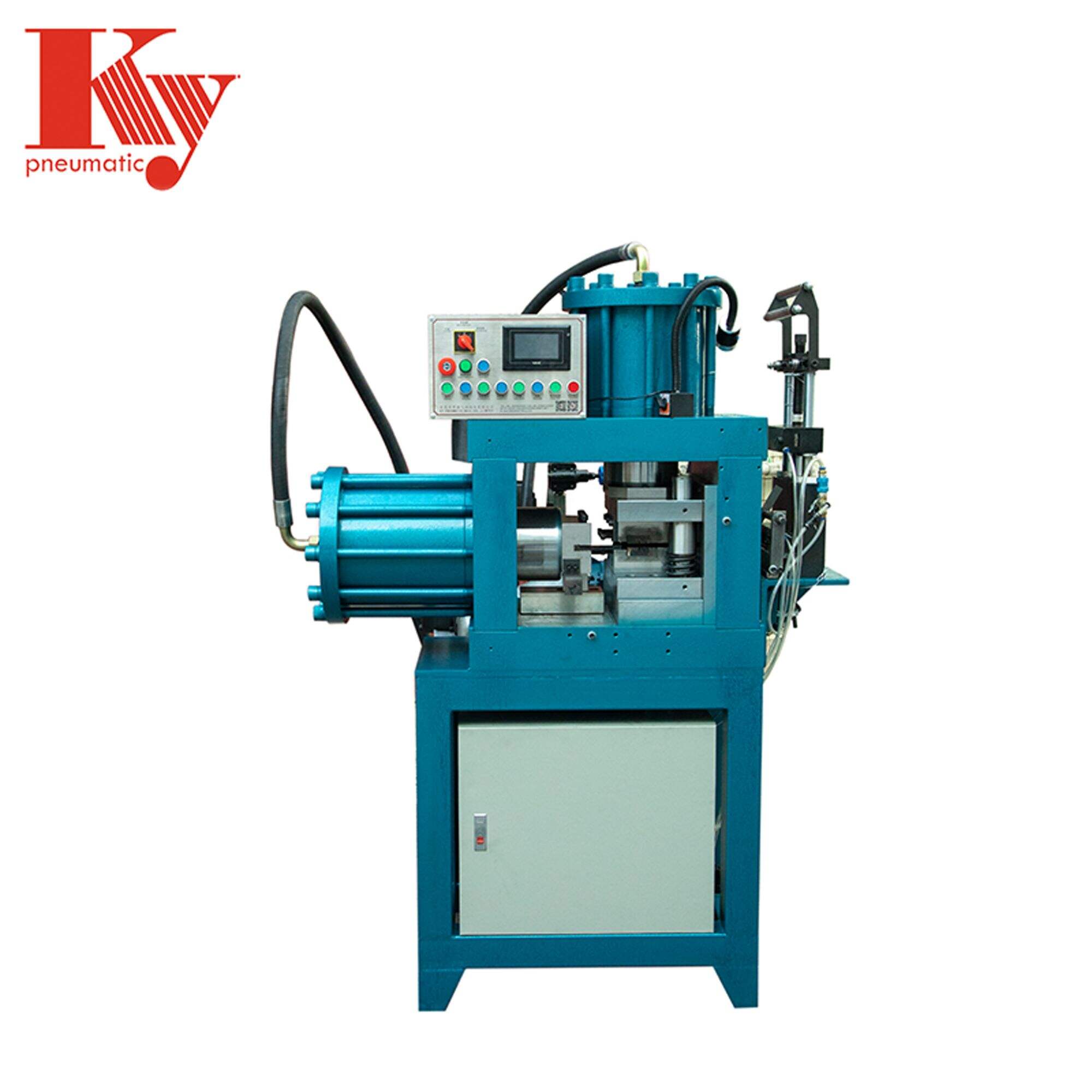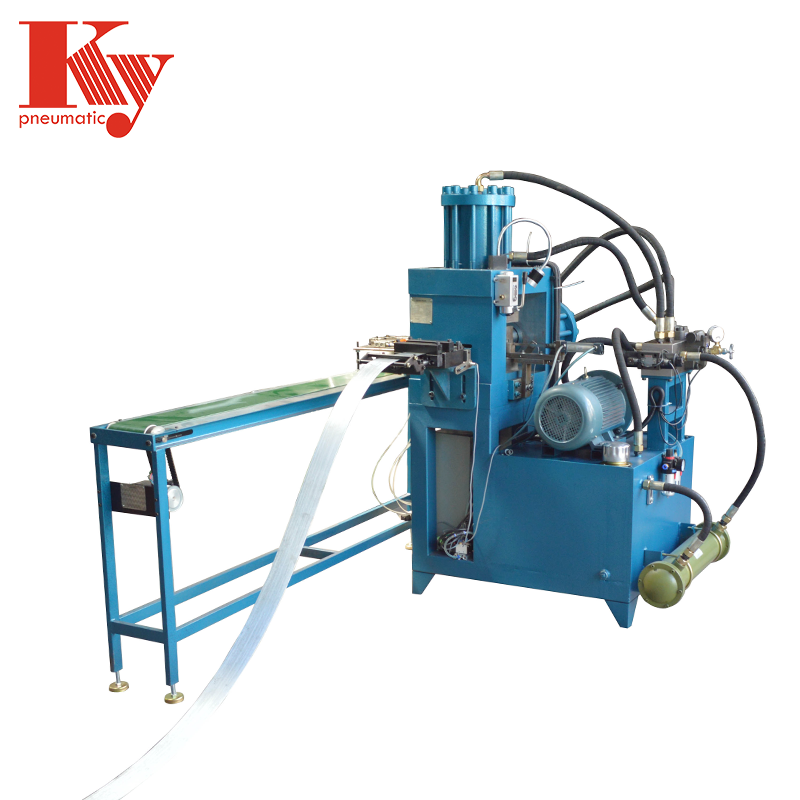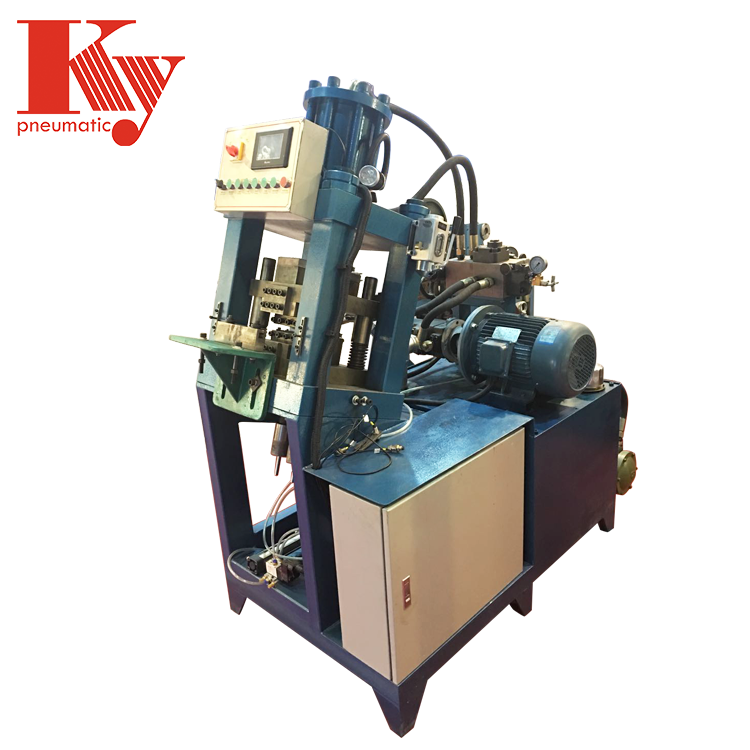One-Stop Solution from Raw Materials to Finished Products! The All-In-One Production Line of KY Nailing Equipment
KY Nailing Equipment's Integrated Production Approach
The Evolution of All-In-One Manufacturing Solutions
Looking back at how manufacturing techniques have evolved over time shows a clear pattern of moving towards greater efficiency, especially with the rise of all-in-one manufacturing solutions. Back in the day, factories depended heavily on manual labor where different stages of production were handled separately, leading to lots of wasted time and money. Everything changed when Henry Ford introduced the assembly line concept, which brought processes together under one roof and set the stage for today's integrated approaches. What makes these combined systems so valuable is that they cut down on waste across multiple areas at once. According to research done by McKinsey, companies that switch to this unified model typically see around 20 percent better performance in their output. And it's not just theoretical either - real world data backs this up. Deloitte found in their 2022 report that nearly two thirds of manufacturers had already implemented some kind of integrated system by then. With competition getting fiercer every year, these kinds of efficiencies aren't just nice to have anymore but essential for staying competitive in today's market.
Key Components of Modern Nail Production Lines
Nail manufacturing lines rely on a few essential parts to keep things running smoothly and accurately. At the heart of most operations sit two main workhorses: wire drawing machines and automatic feeders. Wire drawing machines take those thick steel rods and stretch them out into thin wires ready for making nails. Without these machines, getting consistent quality would be nearly impossible. Automatic feeders handle another crucial job - they keep feeding material through the system nonstop so workers don't have to constantly reload stuff manually. This means production doesn't grind to a halt every time someone needs to restock. Recent tech upgrades have made a big difference here too. Many newer wire drawing machines now come with built-in sensors that watch what's happening in real time. When something starts going wrong, operators get alerts before problems really escalate. All these improvements work together across the whole production line. The end result? Nails coming off the assembly line that meet strict standards while wasting less material overall.
Streamlined Manufacturing Process from Raw Material to Finished Product
Wire Processing: Straightening & Flattening Stages
Processing wire starts with straightening and flattening, two essential steps that set the foundation for quality nails. First comes straightening, where manufacturers run the wire through special equipment to get rid of kinks and bends. This makes everything work better down the line when cutting and shaping the actual nails. After straightening, the wire goes through flattening machines that squeeze it down to just the right thickness. These machines need to be pretty robust since they handle all sorts of wire sizes and materials. Most have adjustable rollers and can take on serious tension without breaking. Getting these basics right really matters because if the wire isn't properly prepared at this stage, problems show up later in production, wasting time and materials. That's why many shops invest heavily in good straightening and flattening equipment upfront.
Precision Cutting and Shaping Operations
Getting the cuts just right when making nails from processed wire remains absolutely critical to producing quality fasteners. The manufacturing world has seen major changes here thanks to new technology. Factories now rely on specialized equipment including automated cutters and advanced blade systems that keep things accurate while reducing material waste. When nail dimensions vary too much, it creates problems down the line, so maintaining consistency throughout production is really important for manufacturers. Companies have adopted innovations such as laser guided cutting and those fancy CNC systems to boost accuracy across their operations. These technologies let them produce large quantities quickly without sacrificing precision, which means fewer mistakes by workers during assembly lines and better overall product quality.
Automated Coating & Surface Treatment
After shaping is complete, manufacturers apply various coatings and treatments automatically to make nails last longer and resist rusting. The machines can consistently coat each nail with materials like zinc or polymer layers that form protection against wear and tear. Some coatings stop rust from forming altogether, whereas others look better or work better under different conditions. New techniques like electroplating and powder coating have really changed things in recent years. Nails today hold up much better than they used to, which explains why builders and furniture makers rely on them so heavily across their projects. Most importantly, these improvements mean nails actually outperform what most industry specs require when it comes to how long they last before needing replacement.
Automation & Precision in KY's All-In-One Production Line
PLC Control Systems for Operational Flexibility
The Programmable Logic Controller or PLC systems play a major role in making KY's integrated production line more adaptable. With these controllers, manufacturers can adjust their manufacturing processes on the fly so the production line keeps running smoothly even when demands shift or unexpected issues pop up. Take situations where product specs need changing quickly during production runs. The PLC system lets workers switch things over without stopping the whole operation. This kind of adaptability cuts down on those frustrating production stoppages while keeping output levels high. Looking at actual factory data, automated systems tend to cut down production time quite a bit. That makes all the difference in staying ahead of competitors in markets that never seem to settle down.
Speed Optimization Across Production Stages
Getting production moving faster at different points along the line really matters when trying to get the most out of KY's combined production system. Plants often implement things like timing operations together and better planning systems to boost output while still keeping product quality intact. Take one big factory we looked at recently they managed to crank up their production rate around 30% after working on their speed improvements. They also saw less waste going out the door and burned through about 15% less power overall. These kinds of numbers show why companies keep investing in making their factories run smoother. With how quickly markets change nowadays, manufacturers need these kinds of tweaks just to stay competitive against rivals who might be able to deliver products faster or cheaper.
Quality Control Measures for Superior Nail Output
Real-Time Defect Detection Systems
In the world of nail manufacturing, real time defect detection systems are becoming increasingly important for keeping quality consistent across batches. When these systems spot problems during production runs - think surface flaws or size inconsistencies - they flag them right away so nothing slips through to packaging. Integrating this kind of inspection directly onto the production floor means plant managers don't have to wait until end of day checks to catch mistakes. Some plants report around a 30 percent drop in defective products after installing these systems, which makes sense when considering how much money gets wasted on returns and rework. Better quality control translates to happier customers who keep coming back for more fasteners that actually work as intended.
Consistency Testing for Industrial Standards
Testing for consistency matters a lot when making sure nails meet what the industry expects. The actual process looks at things like how big they are, how much they weigh, and whether they can hold up under stress before shipping out a whole batch. This checks off requirements from standards groups such as ASTM or ISO that basically tell everyone what good quality actually means. When manufacturers stick to these rules, they get reliable products and build trust among customers too. Regular checks catch problems sooner rather than later, so the final product stays top notch. Clients across different fields where nails need to perform well know they can count on consistent results because of this ongoing attention to detail during production.
KY Nailing Equipment's Complete Machinery Solutions
T Brad Nail Making Machine: High-Speed Production Capabilities
The T Brad Nail Making Machine was built for fast production rates needed in modern manufacturing settings. It can crank out anywhere between 100 to 160 nails every minute, and operators can tweak this speed based on what their shop actually needs at any given time. What really sets this machine apart is the PLC control system it comes with. Workers can run it manually when necessary, switch to semi-auto mode during busy periods, or let everything go fully automatic when conditions are right. The flexibility of these options means factories can keep their output moving while cutting down on how much hands-on work employees need to do. For businesses looking to boost both productivity and bottom line results, this kind of setup makes all the difference in staying ahead of competition.
F Brad Nail Making Machine: Compact Design for F-Series Nails
The F Brad Nail Making Machine's compact size really works well for smaller shops and mid-sized manufacturing operations that struggle with limited space. The way it saves room means companies can arrange their production areas efficiently without needing tons of extra floor space. What makes this machine stand out is how it fits right into tight corners and workspaces while still doing all the things needed for proper nail making. Many shop owners report they were able to integrate this equipment quickly into existing setups and saw noticeable boosts in productivity right away. For businesses squeezed for room but looking to expand capacity, this compact design has become a game changer in terms of getting more done with less physical footprint.
Auto Pneumatic Brad Nail Maker: Dual-Operation Efficiency
The Auto Pneumatic Brad Nail Maker comes equipped with dual operation features, so a single worker can handle two units simultaneously. This setup cuts down on payroll expenses while boosting productivity, letting businesses produce more nails without hiring extra staff. The machine offers three different working modes manual, semi auto, and full automation giving producers options depending on their specific needs and budget constraints. Industry data shows these dual operation systems typically boost production rates by around 30 percent when compared to older models that only run one machine at a time. For manufacturers watching their bottom line, this kind of efficiency makes all the difference in staying competitive without breaking the bank.
T/F Series Hybrid Machine: Multi-Gauge Adaptability
What really sets the T/F Series Hybrid Machine apart is its ability to handle multiple gauges, which means it works well for all sorts of nail specs needed in different manufacturing setups. Manufacturers love being able to flip between those 16 and 18 gauge requirements without losing much time during production switches. For shops dealing with variable orders, this kind of flexibility saves both time and money. According to folks who know the industry inside out, machines like these aren't just convenient but essential for keeping up with changing customer demands. They let businesses make better use of their equipment while staying nimble enough to adjust when markets shift unexpectedly.
 EN
EN
 AR
AR
 BG
BG
 CS
CS
 FI
FI
 FR
FR
 DE
DE
 EL
EL
 HI
HI
 IT
IT
 JA
JA
 KO
KO
 PL
PL
 PT
PT
 RU
RU
 ES
ES
 TL
TL
 ID
ID
 LT
LT
 SR
SR
 UK
UK
 VI
VI
 SQ
SQ
 GL
GL
 HU
HU
 MT
MT
 TH
TH
 TR
TR
 AF
AF
 MS
MS
 AZ
AZ
 KA
KA
 BN
BN
 LO
LO
 LA
LA
 MI
MI
 MN
MN
 NE
NE
 KK
KK
 UZ
UZ





